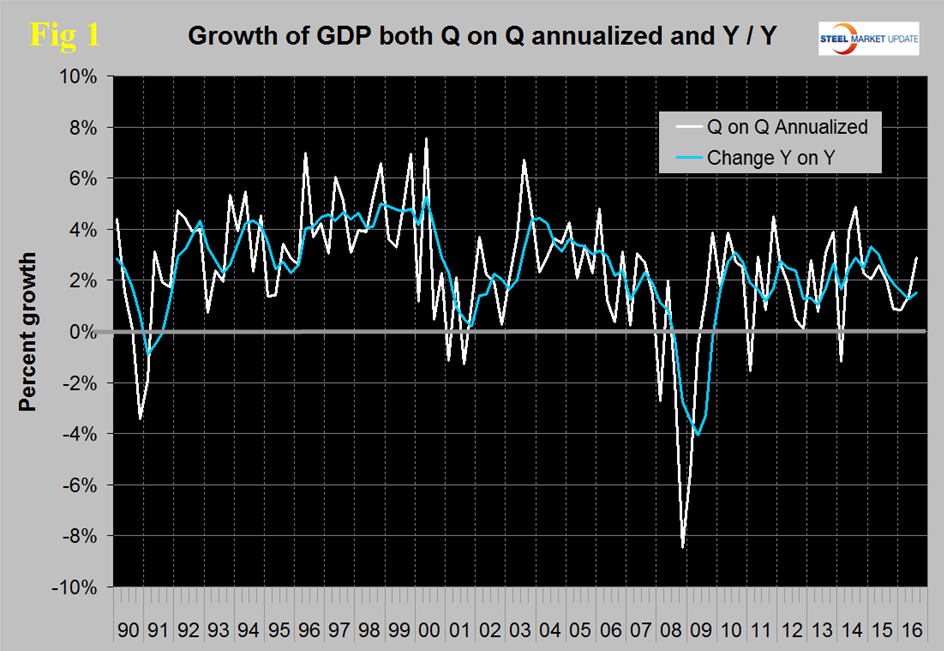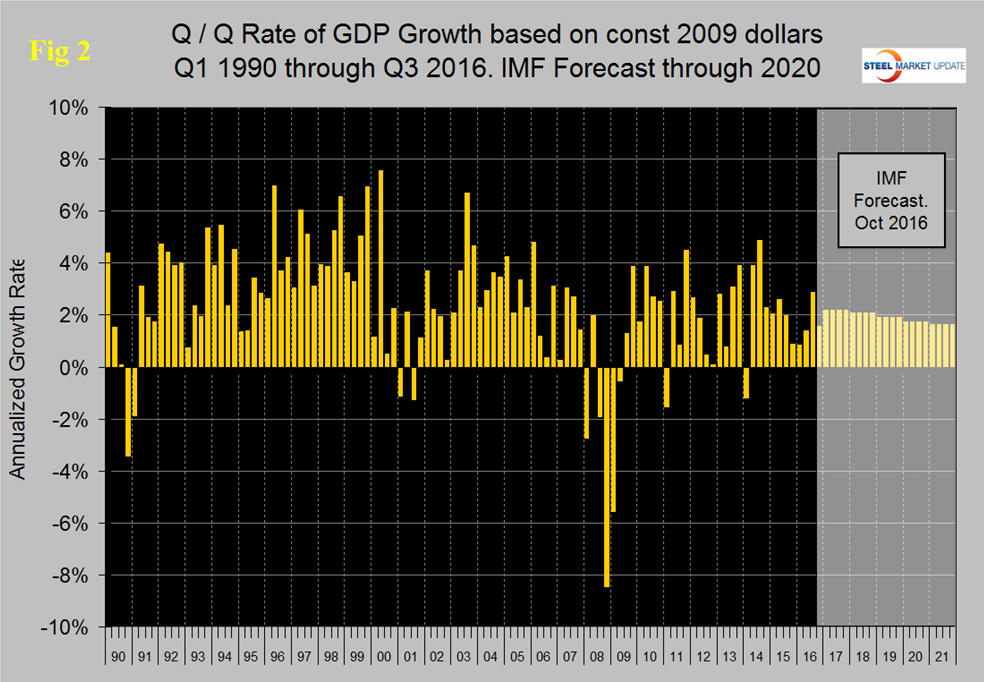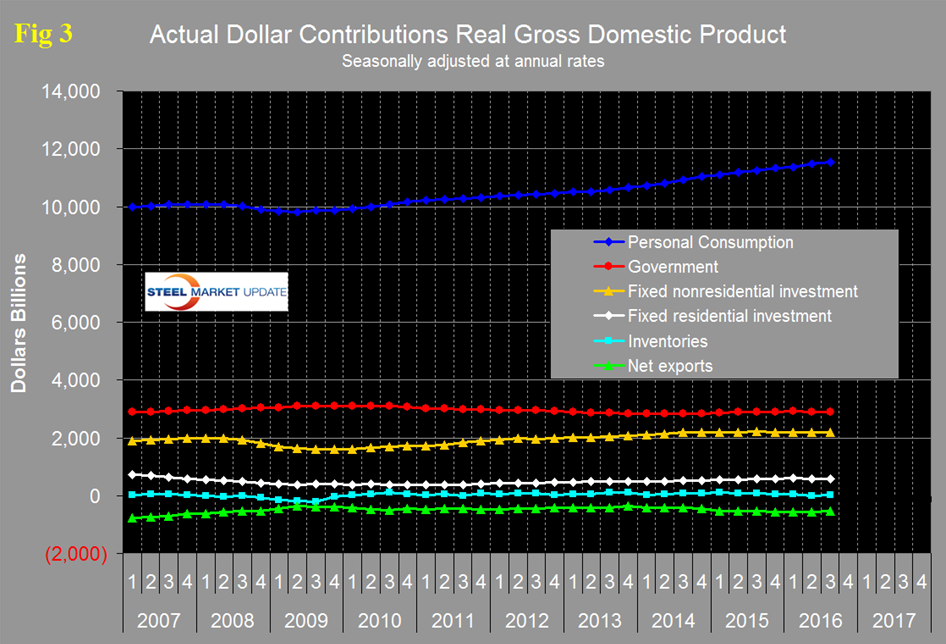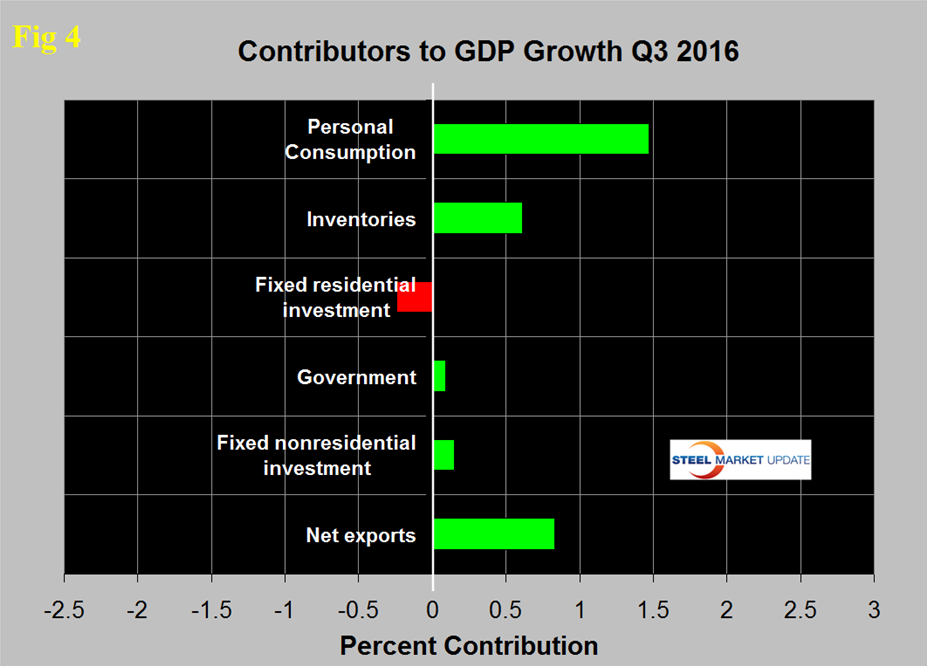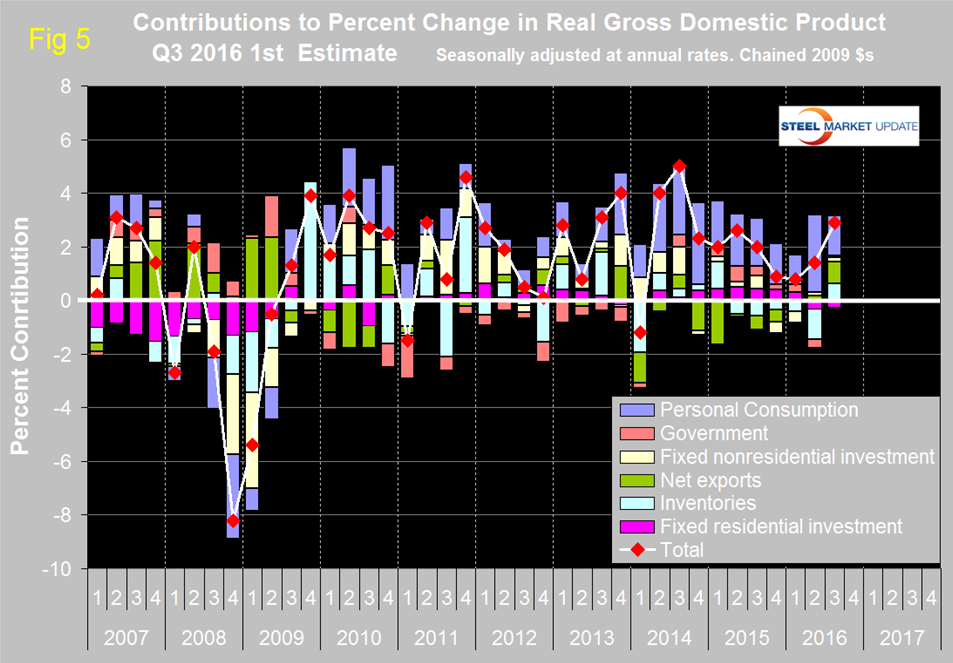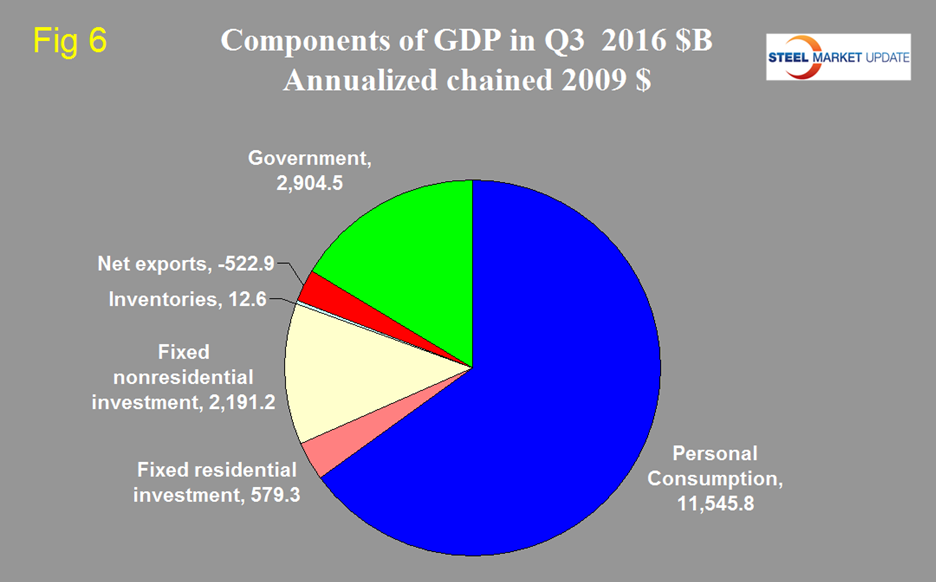Economy

US Gross Domestic Product for Q3 2016 - First Estimate
Written by Peter Wright
November 11, 2016
The annualized GDP growth rate in the first estimate of the third quarter of 2016 was 2.91 percent which was the best result since the Q3 of 2014. Economy.com had this to say: “Prospects remain bright. Consumers are doing their part and spending growth will remain strong as labor markets tighten and wage increases accelerate. Inflation is low, housing values are near record highs, construction should increase, and household and corporate debt loads are about as light as they have ever been. Risks remain significant, but the economy should be able to overcome them. Another recession is coming, to be sure. It will emanate from a part of the economy’s balance sheet that is opaque and not well understood. Most everyone will miss it. But odds are that the current expansion, already one of the longest, has a ways to run.”
GDP is measured and reported in chained 2009 dollars and in the first estimate of Q3 was $16.702 trillion. The growth calculation is misleading because it takes the quarter over quarter change and multiplies by 4 to get an annualized rate. This makes the high quarters higher and the low quarters lower. Figure 1 clearly shows this effect.
The blue line is the trailing 12 months growth and the white line is the headline quarterly result. On a y/y basis GDP was up by 1.5 percent, an improvement from 1.28 percent in the second quarter. In the last six years, since Q1 2011 the trailing 12 month growth of GDP has tracked between a high of 2.88 percent to a low of 1.07 percent therefore the latest result remains at the low side of this range.
Figure 2 shows the headline quarterly results since 1990 and the October IMF forecast through 2021. In their October revision, the IMF downgraded their forecast of US growth in 2016 from their April 2016 estimate of 2.4 percent to 1.58 percent and downgraded 2017 from 2.50 percent to 2.20 percent.
There are six major subcomponents of the GDP calculation and the magnitude of each of these is shown in Figure 3. Personal consumption accounted for 69.1 percent of the total in the latest data.
Figure 4 shows the change in the major subcomponents of GDP in Q3 2016 and the dominance of personal consumption as a growth driver.
Fixed residential investment was the only drag on growth in the third quarter. The biggest difference between Q2 and Q3 was the contribution of inventories which changed from negative 1.16 percent in Q2 to positive 0.61 in Q3 a swing of 1.79 percent and accounted for the whole of the change in Q3 and then some. Declining inventories have a negative effect on the overall GDP calculation and this was the case for the previous five quarters. Over the long run inventory changes are a wash and simply move growth from one period to another. When a decline in one period is subtracted from growth, it can often be a healthy indicator for future periods. Such a decline suggests that there are lower levels of overall inventories which will set the stage for inventory increases – which will then add to GDP growth in the future. This seems to be what happened in Q3 and can be expected to continue into Q4. Residential construction made a negative contribution in both Q2 and Q3 as non-residential which includes infrastructure made a small positive contribution in both quarters. Net exports made a positive contribution in both Q2 and Q3 adding 0.18 percent and 0.83 percent respectively. Since US trade is net negative we don’t understand this result but we reproduce here what was reported. Figure 5 shows the contributors to GDP extended back through Q1 2007 and describes the quarterly change in the six major subcomponents.
In the Q2 the negative contribution of inventories was the greatest since Q1 2014 and in the Q3 was positive contribution was the greatest since Q1 2015. The contribution of personal consumption was 1.47 percent down from 2.88 percent in Q2 but up from 1.11 percent in the Q1. Personal consumption includes goods and services, the goods portion of which includes both durable and non-durables. Government expenditures contributed negative 0.3 percent in Q2 and positive .09 percent in Q3. The contribution of fixed residential investment at negative 0.24 percent in Q3 and negative 0.31 percent in Q2 were the first quarters that this component detracted from GDP since Q1 2014. Figure 6 shows the breakdown of the $16.7 trillion economy.
SMU Comment: It is disturbing that the contribution of personal consumption was down in Q3 and that the construction components were lack-luster. The change in inventories was what made this report appear good on first glance but as we reported above this is simply moving growth from one time to another. Historically it has been necessary to have about a 2.5 percent growth in GDP to get any growth in steel demand so this latest estimate of GDP suggest that at least steel demand won’t contract in the immediate future. This relationship is a long term average and in reality steel is much more volatile than GDP. If GDP takes a dive then steel demand craters and if GDP takes a sudden upturn steel soars. Neither of these extremes is evident at present.

Peter Wright
Read more from Peter WrightLatest in Economy

Chicago PMI dips 0.1 points in June
The Chicago Purchasing Managers Index (PMI) slipped 0.1 points to 40.4 points, in June.

Multi-family pullback drives housing starts to 5-year low in May
US housing starts tumbled in May to a five-year low, according to figures recently released by the US Census Bureau.

Architecture firms still struggling, ABI data shows
Architecture firms reported a modest improvement in billings through May, yet business conditions remained soft, according to the latest Architecture Billings Index (ABI) release from the American Institute of Architects (AIA) and Deltek.

Manufacturing in New York state contracts again
However, companies are growing more optimistic about the future.

ArcelorMittal plans wire-drawing closure in Hamilton, shifts production to Montreal
ArcelorMittal’s (AM) Hamilton location to be shuttered, wire production shifting to Montreal.

